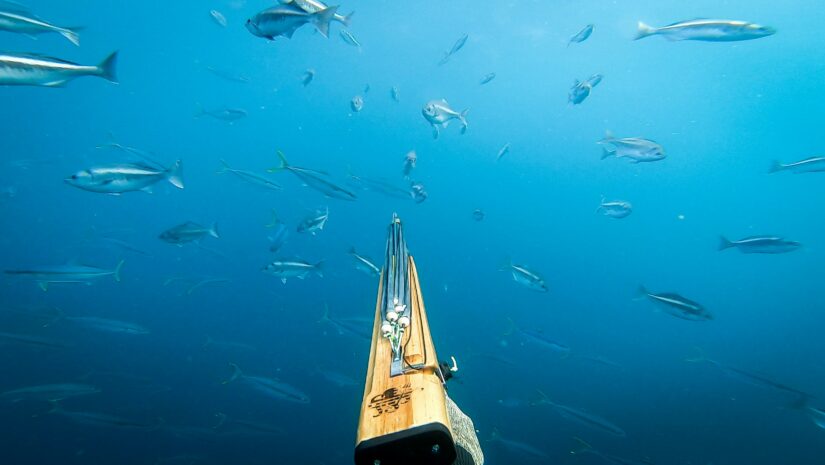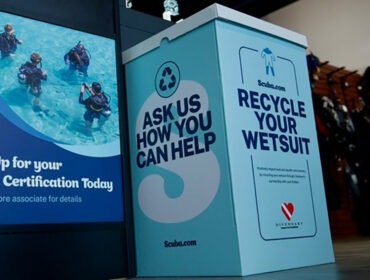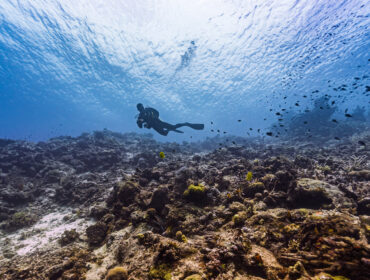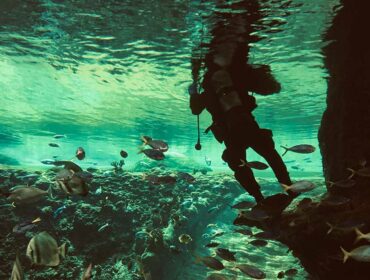Requiring a good chunk of stamina, patience, and dedication, spearfishing is a sport not for the faint of heart. The skills required to maneuver the water for sustained periods of time and accurately spear fish is no easy feat. Despite this, the popularity of the sport continues to grow as diving clubs hold competitions in spearfishing
Although not allowed in competitive spearfishing, some “spearos” (slang for spearfishers) scuba dive. They do this to increase their time in the water, making it a recreational activity good for beginners.
You might be wondering, “Is spearfishing bad?” In some discussions, spearfishing remains a controversial topic. However, regulations and guidelines embedded in the sport mitigate any harm. Additionally, they show how spearfishing can be beneficial for marine conservation.
Now, hold your breath and dive in! Let’s explore the wonderful world and sport of spearfishing.
What is Spearfishing?
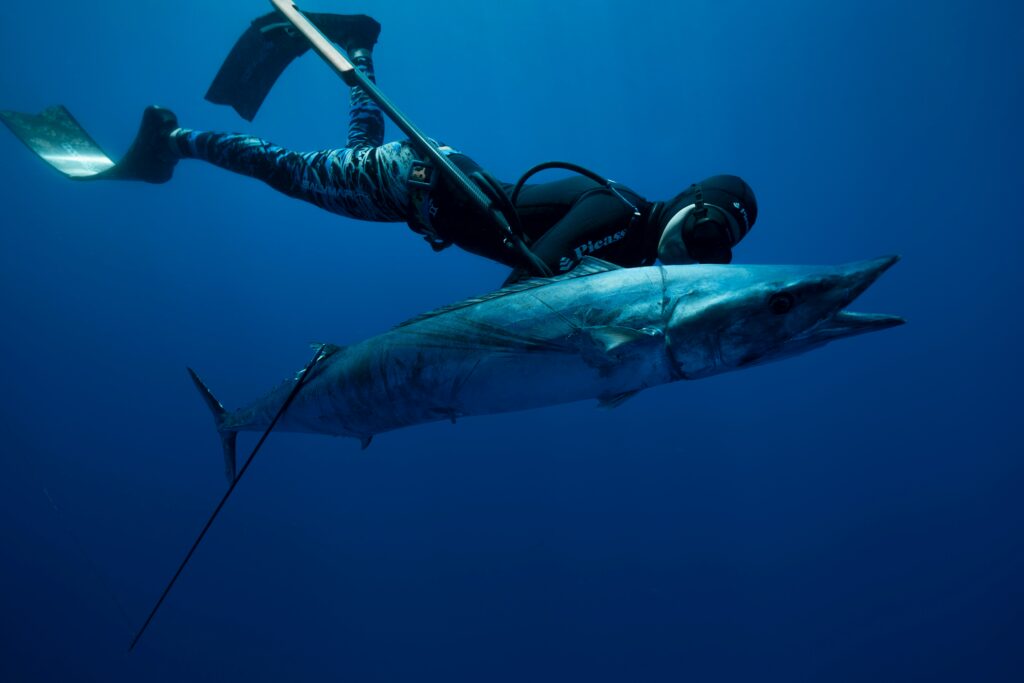
Before we submerge ourselves in the cold waters, it is important to first know what spearfishing is. Spearfishing is the sport of underwater hunting that started in the 1930s before rapidly spreading to the rest of the world.
Before it became a sport, it was one of the oldest forms of fishing utilized by our ancestors for livelihood and survival. In some places such as the Philippines, locals still continue to make use of spearfishing as their primary method for acquiring fish. From simple hand spears of the past to spearguns in the modern era, the sport has continuously developed its means of hunting to effectively penetrate larger fish.
There isn’t just one way to do spearfishing. In particular we have free diving, scuba diving, and snorkeling. Let’s get a closer look on which method of spearfishing is best for you:
Free Diving
Free diving which is diving into the water with your natural air tank, your lungs! With free diving, spearos are limited only by how long they can hold their breath and how deep they can swim. This is also the technique implemented in most if not all spearfishing tournaments.
Scuba Diving
This is when spearfishers make use of scuba gear to stay underwater for extended periods of time. It is important to note however, that this particular technique is not only frowned upon but is even illegal in certain European and Caribbean nations. This is due to the risk that unethical divers have more time to hunt and collect well beyond the legal limit leading to a decline in the population of certain species.
Snorkeling
This technique employs the use of a “snorkel”, a breathing device that ensures consistent airflow near the surface of the water. It allows divers ample time to scout for prey and prepare as they stay near the water’s surface making dives more efficient.
Environmental Impact of Traditional Fishing
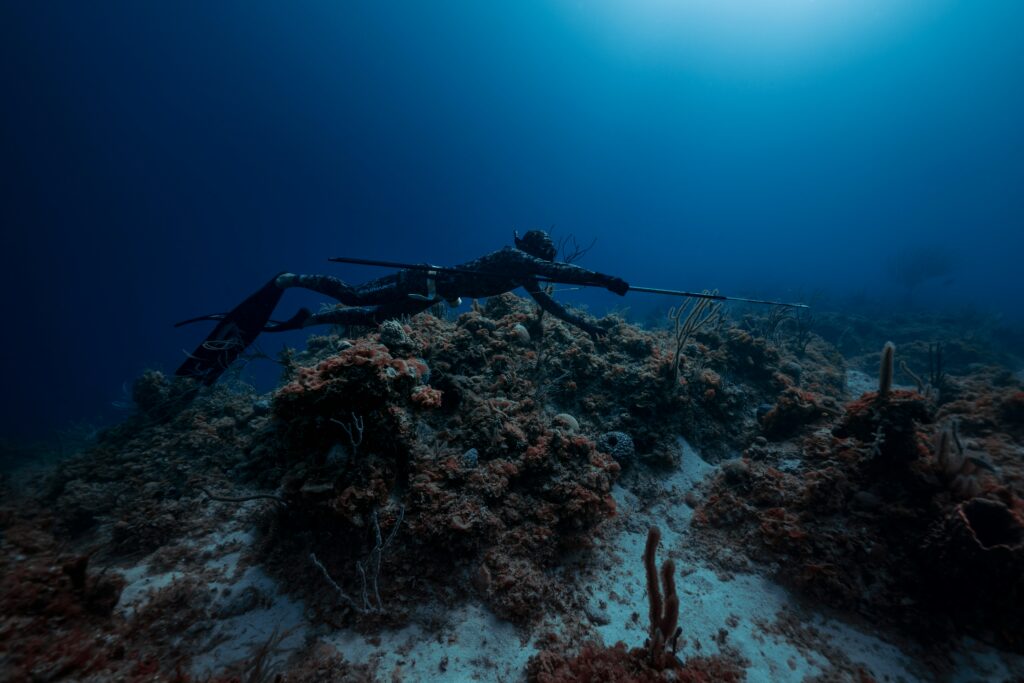
Spearfishing is of course only one of the many methods of fishing out there. Some other fishing methods include using:
- Demersal/bottom trawl
- Gillnets
- Longlines
- Purse Seine
- Pots and traps
- Dredges
- Pelagic or midwater trawls
These methods as a result of modern fishing gear are effective in capturing fish but poses risks to the overall marine ecosystem such as bycatch, overfishing, and habitat destruction. Bycatch is when other animals are unintentionally caught in nets only to be discarded overboard either injured or dead. Bycatch leads to overfishing where too many fish are caught which depletes the breeding population’s recovery.
Spearfishing is more sustainable as it is commonly done in shallow waters which not only limits the types of fish to be caught depending on the availability and local guidelines but also minimizes the damage to habitats. Additionally, spearfishers have to think twice before shooting their spears as they only have a limited time underwater. This ensures that no fish is accidentally released and that fewer fishes are taken out of the water allowing for the breeding population to steadily recover.
3 Benefits of Spearfishing as a Sustainable Sport
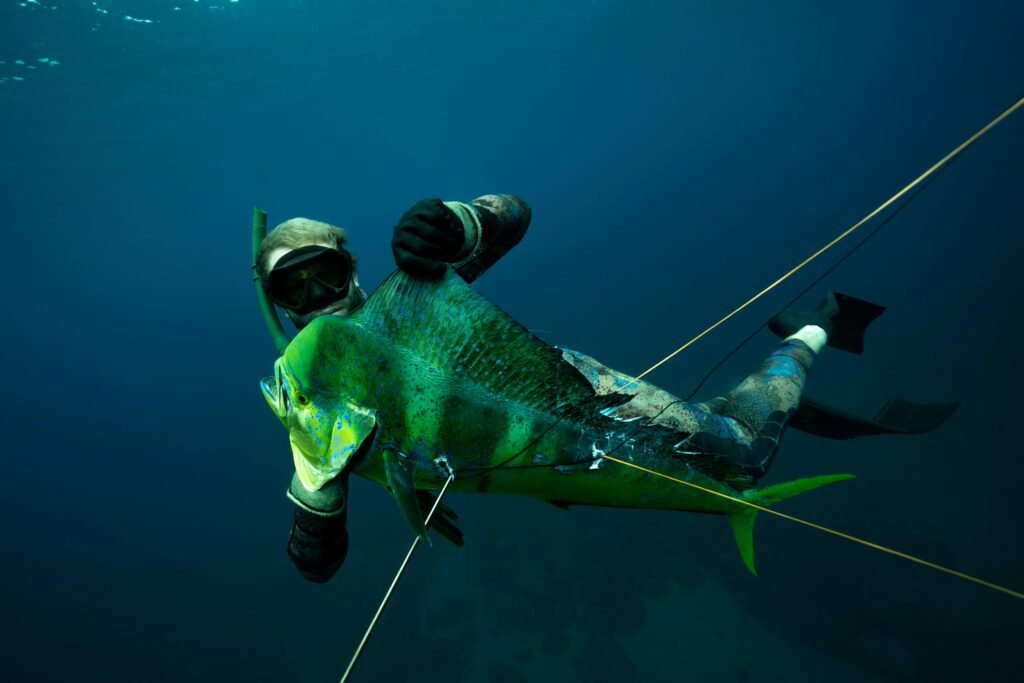
Selective Fishing
Spearfishing is considered to be one of the most responsible and ethical means of fishing. This is primarily because they practice selective fishing. Selective fishing is the targeting of particular fish species, sizes, and genders. Such significantly reduces the risk of bycatch while at the same time ensuring that non-targeted species remain unharmed.
Minimal Habit Disruption
Traditional forms of fishing like rod and tackle, throw nets, and drag nets cause substantial damage to marine life. From overfishing, dragging mud and debris from the ocean floor, and even snapping off bits of coral— without significant precautions in place, it’s only a matter of time before our oceans become lifeless and difficult to salvage.
One of the biggest benefits of spearfishing is how it minimizes disruption to coastal and open ocean habitats. Because all you really need is a line and a spear, you don’t risk polluting or damaging the sea floor. The risk of overfishing is close to zero, as most spearos only catch what they can eat. Fun fact: spearfishing makes up for less than 1% of all fish harvested in the world!
Lower Carbon Footprint
Spearfishing is an eco-friendly way of fishing because you’re selective with the type of fish that you want to get! It involves physically looking for the fish compared to hook-and-line fishing and net fishing where everything is up to chance.
From catch to consumption, spearfishing has gone a long way when it comes to creating sustainable practices. Now, everything from the size to even the breeding seasons of the fish is being taken into consideration.
Ethical Spearfishing Practices
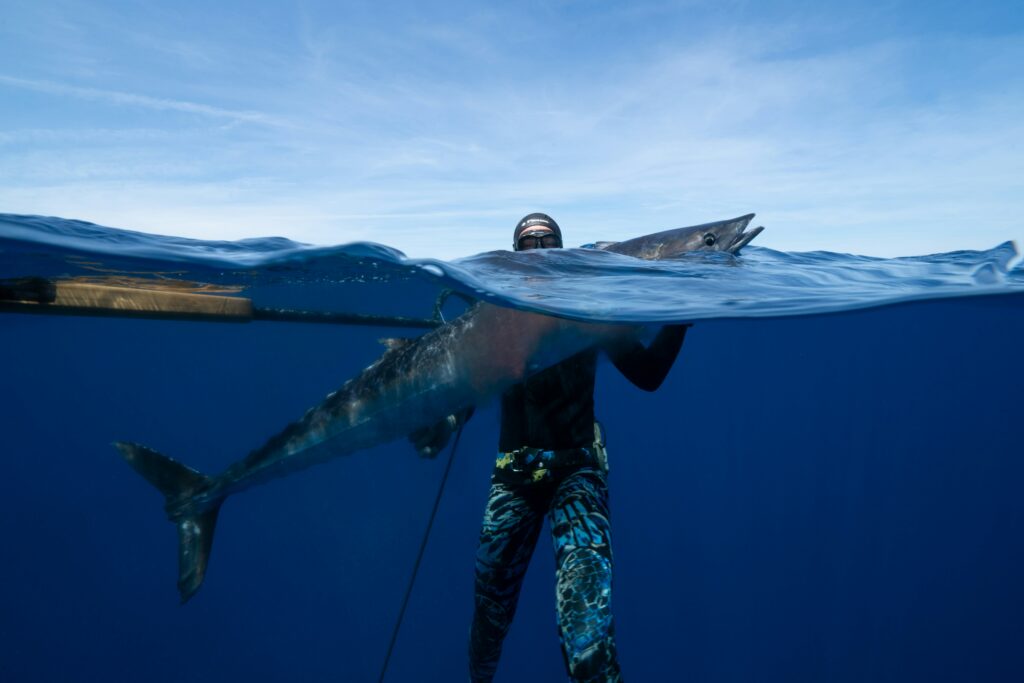
Before you drive to your local fishing store and buy a speargun, it’s important to understand that there’s more to spearfishing than going to a body of water and firing away. Just like many sports, there are guidelines in place to ensure that the practice is ethical and sustainable.
The first thing you should always do is to look up the regulations and guidelines in your area. Some countries have a spearfishing code of conduct, while other countries have marine life that they classify as “protected species.” Take a couple of days to thoroughly research information about spearfishing in your country to make sure that you aren’t breaking any laws.
We recommend reading the Australian Underwater Federation’s spearfishing code of conduct here for more details!
Above all, marine conservation is still a developing field and we’re still trying to find ways to improve it. Educating the people about it and raising awareness is one of the biggest steps in ensuring that our oceans remain beautiful and full of life.
Getting Started with Spearfishing
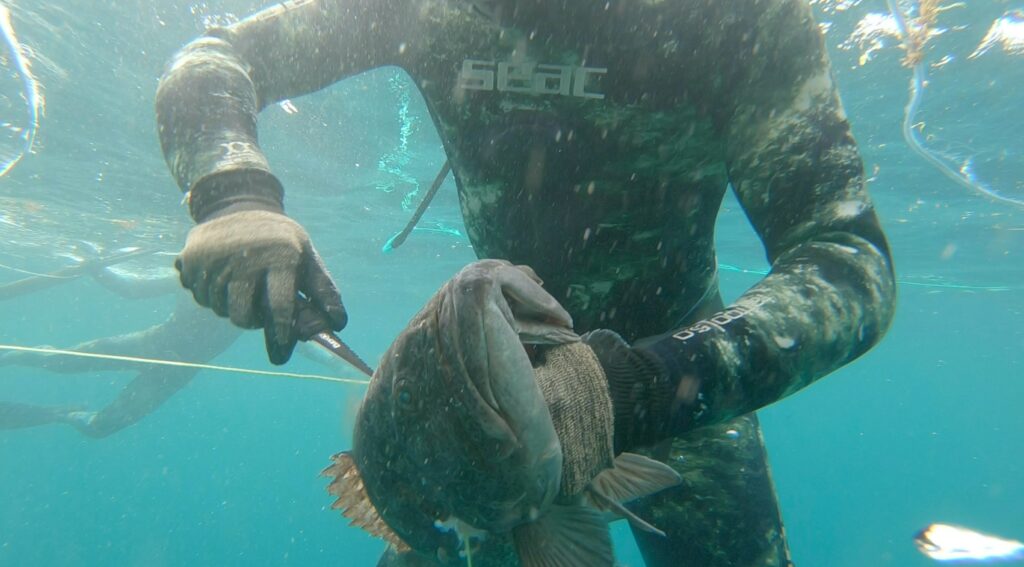
To get the most bang for your buck, make sure that you get equipment that is fit for your needs. Fully commit to spearfishing with good equipment to stay in the sport longer!
The spearfishing essentials are the following:
- A speargun (Start with a 110cm gun and upgrade to a 130cm one if you plan on targeting larger fish)
- Fins
- A mask and snorkel
- A knife (To ethically dispatch a fish when it doesn’t die from being speared)
- A wetsuit
- Socks and gloves
- A weight belt/weights (If you plan on spearing in salt water)
If you’re a complete greenhorn — we also recommend that you get professional training and certification. Spearfishing requires a lot of preparation, so hiring a tutor can give you the direction and knowledge to get started.
Once all the preparation is set and you have all the gear you need, you’re finally ready for game day!
Are there spearfishing competitions?
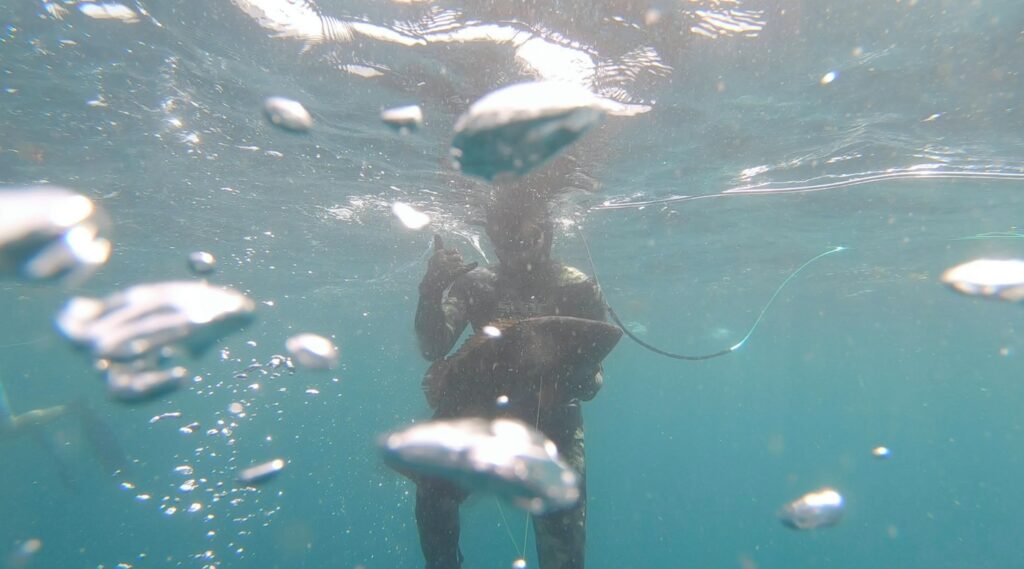
Spearfishing competitions are a lot less common to come by. However, a lot of clubs in certain regions hold local competitions to invite beginners and get them into the sport.
An example of these competitions is the 1770 Classic and the Bluewater Classic. There are also state competitions (called swim-offs) and inter-pacific spearfishing competitions. Different countries from all over the world participate, like Australia, New Zealand, Hawaii, Tahiti, New Caledonia, and Guam!
Spearfish & Save Our Seas in the Process
Spearfishing is a journey that requires patience, dedication, and the right amount of preparation. This article isn’t just a guide to spearfishing. Rather, it is also an open invitation for people to try it out and learn an eco-friendly aquatic sport. From knowing what spearfishing is as a sport to learning about its ethics, having knowledge can go a long way.
We went into a deep dive into what beginners need to know and the type of gear that they need when going into this adventure, now it’s time to re-surface. At the end of the day, the choice is on you to decide whether or not spearfishing is the right sport to invest in. So choose well, keep an open mind, and walk (or swim) the path you want to take!

